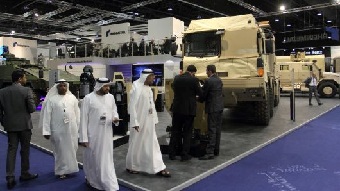Defence budgets in the Middle East are increasing as countries pursue the modernisation of military equipment and expansion of their current capabilities. Jane’s notes that defence expenditure across the Gulf has increased from USD 82.33 billion in 2013 to USD 103.01 billion in 2019. This figure is forecast to continue trending upwards to USD 110.86 billion in 2023.
“Falling energy revenues between 2014 and 2016 led to some major procurement projects being delayed as government’s reigned in budget deficits,” said Charles Forrester, senior defence industry analyst at Jane’s by IHS Markit. “However, defence was generally protected from the worst of the spending cuts due to regional security concerns and budgets are now growing again.”
Procurement expenditure for 2019 is expected to reach USD14.8 billion but is forecast to grow to USD 17 billion by 2023. Procurement expenditure has experienced a rapid recovery following a 25% dip in 2016, as countries have invested in new aircraft, missile systems and naval vessels. Major deals in the region have included Saudi Arabia’s decision to procure the Littoral Combat Ship (LCS) for its navy and new combat aircraft including the Boeing F-15SA Saudi Advanced Eagle and Eurofighter Typhoon, as well as Kuwait’s decision to acquire Boeing F/A-18E/F Super Hornets and Eurofighter Typhoons.
According to Jane’s, the collapse in oil prices in 2014 served as a reminder of the importance of economic diversification for the region. Future investments in developing lower-tier supply chain capabilities will help to position the region’s growing industrial sectors into global component supply chains. In the defence sector, participation in the supply chain will help to build resilience and self-sufficiency into the procurement and operation of defence equipment.
“Within the defence sector, the establishment of Saudi Arabia Military Industries (SAMI) in 2017 and consolidation of the UAE’s defence industrial base through the creation of Emirates Defence Industries Company (EDIC) in 2014 have helped consolidate and drive forward industrial defence capabilities. This has happened as the countries focus on improving the quality of the defence technological work packages they undertake through offset, as well as increasing their ability to begin exporting defence equipment,” Forrester said. “As we approach the end of the decade, a number of governments in the Gulf region are in the process of updating their economic plans and strategies. As part of this, they are considering how new, disruptive technologies can be leveraged,” Forrester said. “As civil-sector demand for technologies such as artificial intelligence and cyber security grows, the acquisition of defence equipment can help to deliver further investments and capabilities in these areas as offset is leveraged.”







